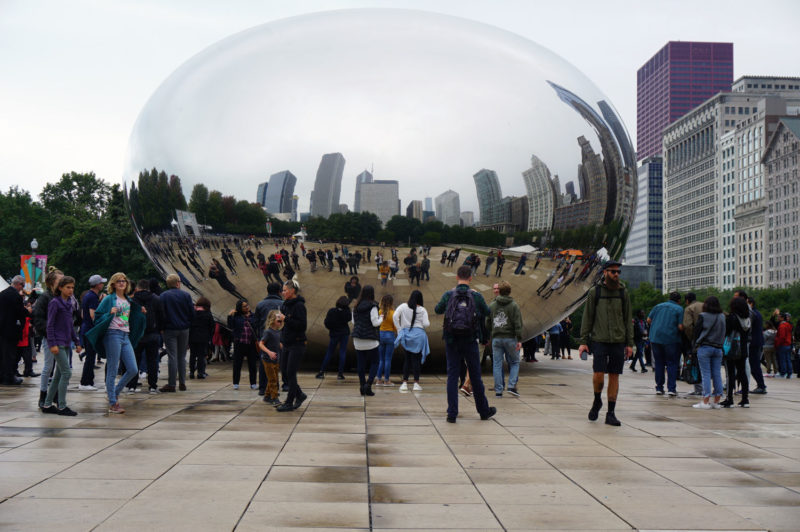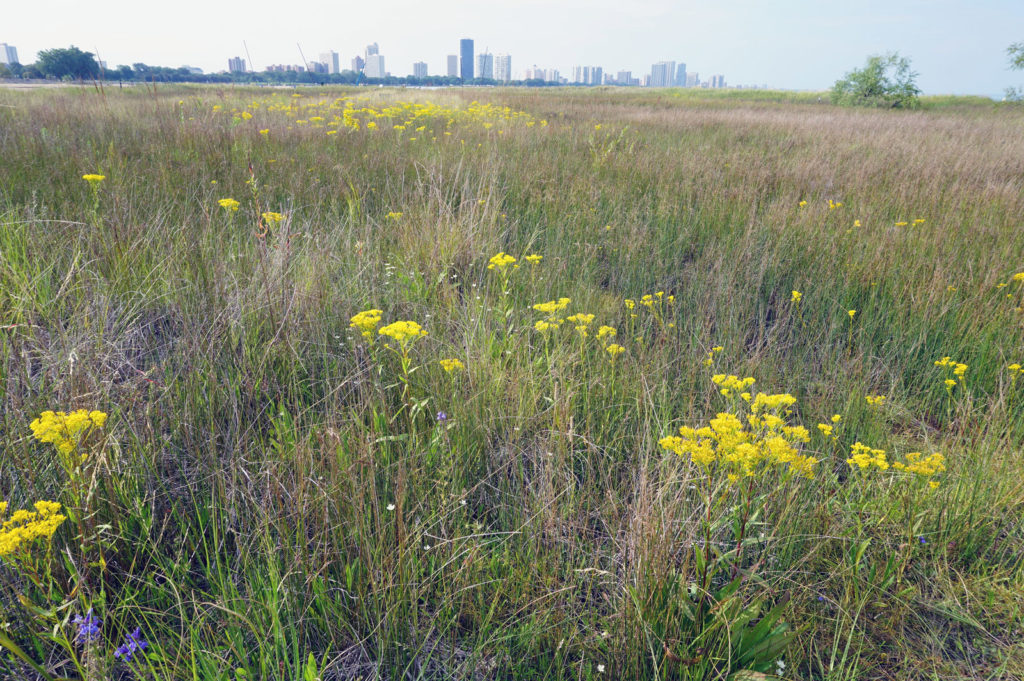 Having seen how much the dune habitat at the tip of Montrose Beach had changed, I returned to get a better look at the dune itself. In the years since foot-traffic across the dune has been curtailed, confined to a few cordoned-off paths, a surprising mix of fresh vegetation has sprung up. The mix is so magical in fact, I wondered whether it was natural or Park District-sown.
Having seen how much the dune habitat at the tip of Montrose Beach had changed, I returned to get a better look at the dune itself. In the years since foot-traffic across the dune has been curtailed, confined to a few cordoned-off paths, a surprising mix of fresh vegetation has sprung up. The mix is so magical in fact, I wondered whether it was natural or Park District-sown.
At first all I noticed was the goldenrod, one of the commonest late-flowering plants in these parts. Gradually, though, I began noticing some plants I’d never seen on a beach. When I returned home, where I could study my photographs, I used the internet to identify the plants. (Using printed field guides would have been faster, but mine were all out at the Michigan house.) Some of the plants at Montrose, I read, are rare in northern Illinois, if abundant elsewhere.
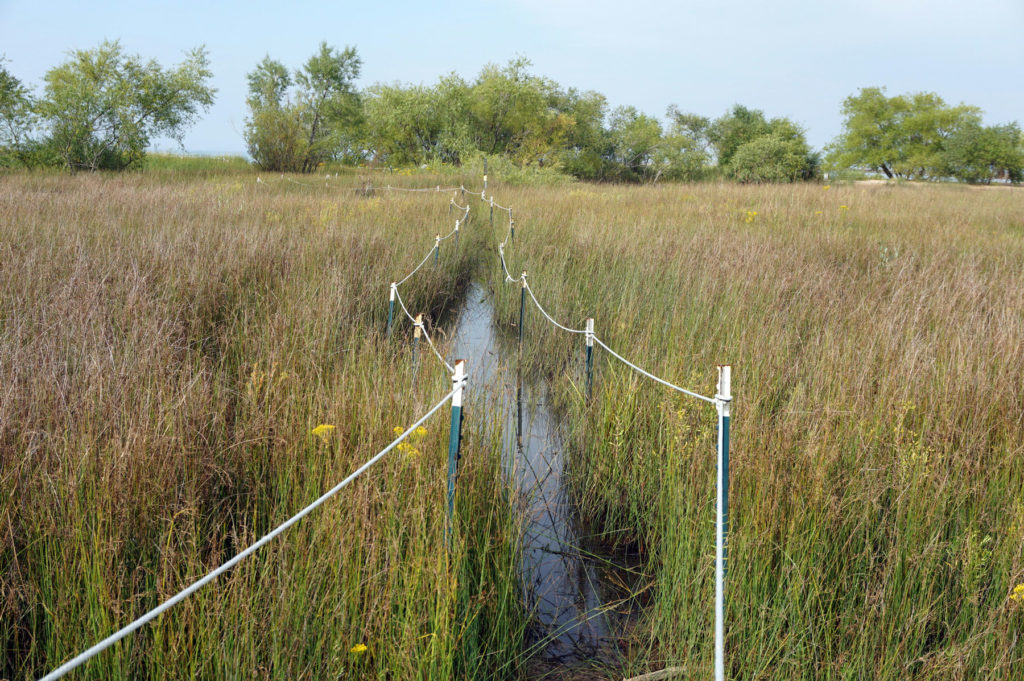
What I discovered by trying to cross the sand was that high rainfall throughout the year has turned this part of Lake Michigan’s shore into a marsh. The dune was mainly underwater, favoring the growth of flowers (like the cardinal flower, which I saw) that like wet feet.

Honestly, the dune was too wet to explore. It was beautiful to look at, though. The still water at the edges was full of see-though minnows.
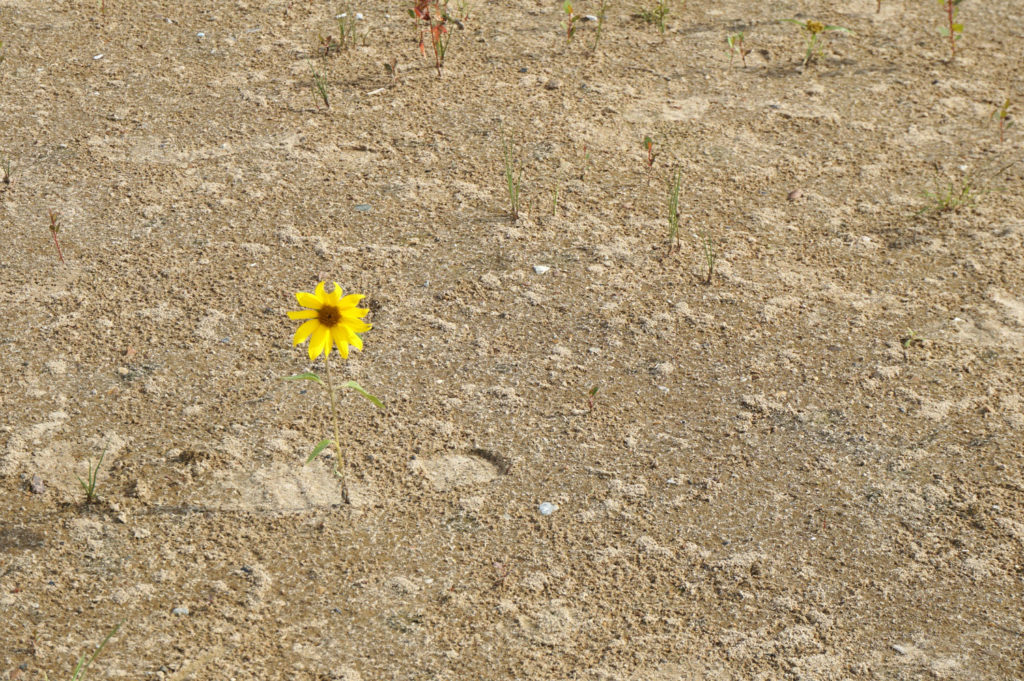 Mr. C., who was with me, spotted this short sunflower growing all by itself in wet sand. Plants that can grow in such conditions need little from the soil.
Mr. C., who was with me, spotted this short sunflower growing all by itself in wet sand. Plants that can grow in such conditions need little from the soil.
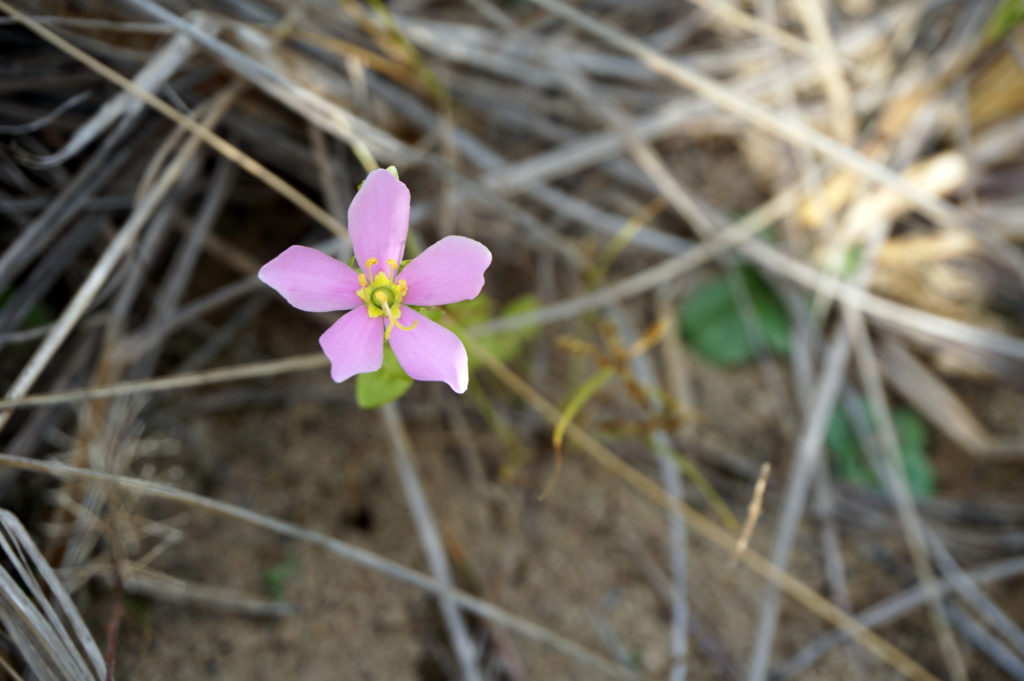 This common rose pink (Sabatia angularis) was in the first year of its biennial cycle. In the first year it sends up a single bloom on a bare stem. Next year, it will reappear as a much larger, leafier plant with profuse blooms.
This common rose pink (Sabatia angularis) was in the first year of its biennial cycle. In the first year it sends up a single bloom on a bare stem. Next year, it will reappear as a much larger, leafier plant with profuse blooms.
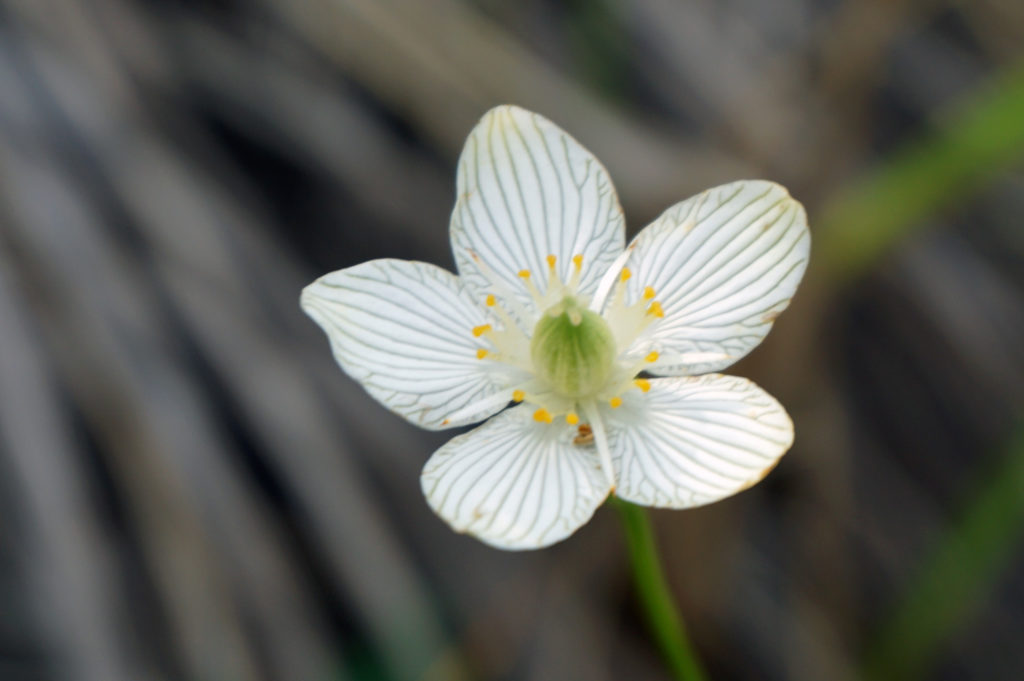 Like the common rose pink, the so-called Grass of Parnassus (Parnassia glauca) is uncommon in northern Illinois. But its small greenish blooms dotted the edges of the paths I followed and nestled next to the goldenrod (in the top photo, above).
Like the common rose pink, the so-called Grass of Parnassus (Parnassia glauca) is uncommon in northern Illinois. But its small greenish blooms dotted the edges of the paths I followed and nestled next to the goldenrod (in the top photo, above).
 More conspicuous and abundant than these plants was the great blue lobelia, which was growing in proximity to the thick grasses and goldenrod. Lobelia syphilitica, with its gorgeous blue-purple flower clusters, is attractive, but it’s poisonous, too.
More conspicuous and abundant than these plants was the great blue lobelia, which was growing in proximity to the thick grasses and goldenrod. Lobelia syphilitica, with its gorgeous blue-purple flower clusters, is attractive, but it’s poisonous, too.
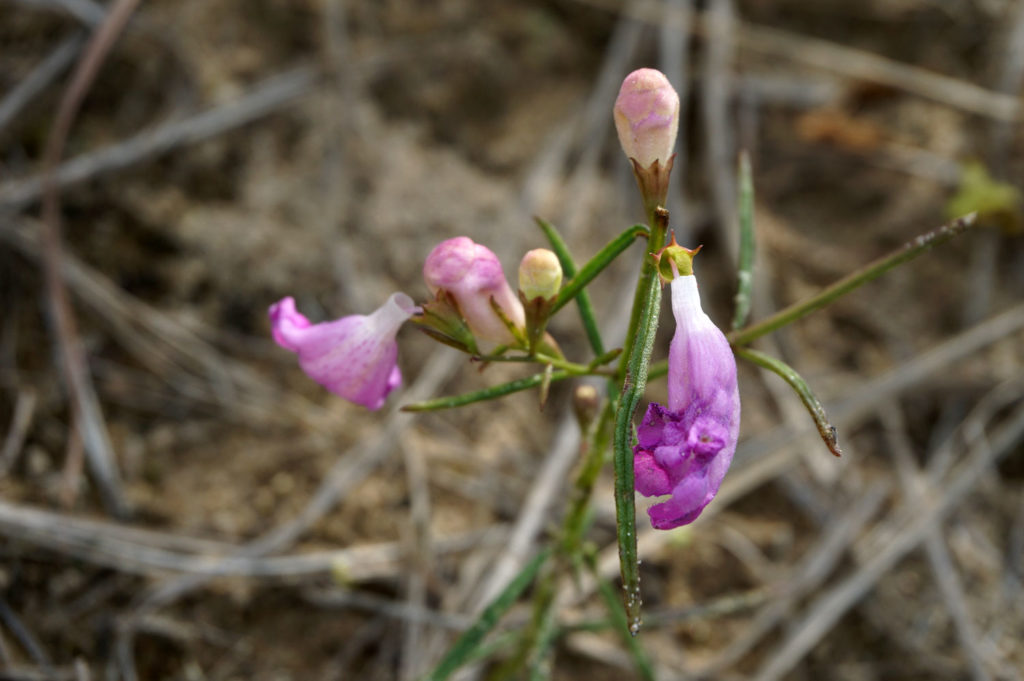 All along the way were tiny plants with round, blush-colored buds and spent blossoms colored like those of beach peas. It turns out this is a wildflower known as slender-leaved false foxglove (Agalinis tenuifolia). It is considered a parasitic plant, partly dependent on the roots of the grasses around it. The flowers of the slender gerardia, as it is also called, are shaped like a fancy horn and are ephemeral, judging from all the faded blooms I saw.
All along the way were tiny plants with round, blush-colored buds and spent blossoms colored like those of beach peas. It turns out this is a wildflower known as slender-leaved false foxglove (Agalinis tenuifolia). It is considered a parasitic plant, partly dependent on the roots of the grasses around it. The flowers of the slender gerardia, as it is also called, are shaped like a fancy horn and are ephemeral, judging from all the faded blooms I saw.
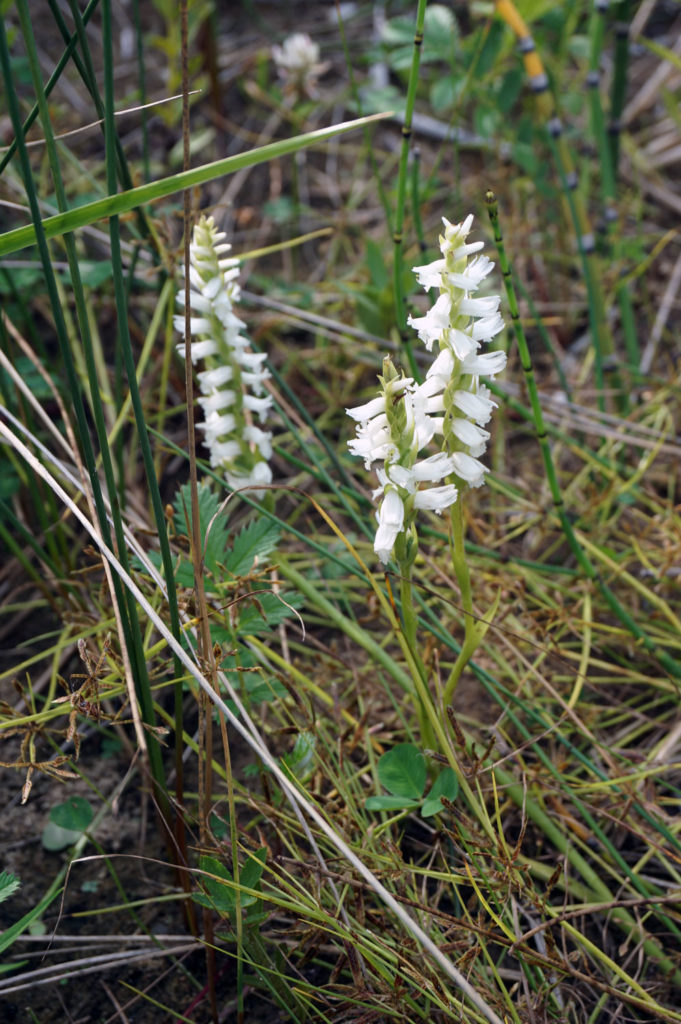
Hurrying along the path ringing the perimeter of the plovers’ pond, I found this beautiful plant blooming among clover and horsetail reeds. I later learned that it was a type of wild orchid. Given the shape of its tiny blooms and the fact that it was blooming in a marsh in early autumn, I concluded it was a specimen of the Great Plains Ladies Tresses orchid. The North American Orchid Conservation Center website has a helpful page of photographs showing all the types of ladies tresses and other orchids that are native to Illinois.
I hadn’t gone to the beach to look at wildflowers necessarily, so it was an unexpected pleasure to see so many showy and unusual plants in one day!
